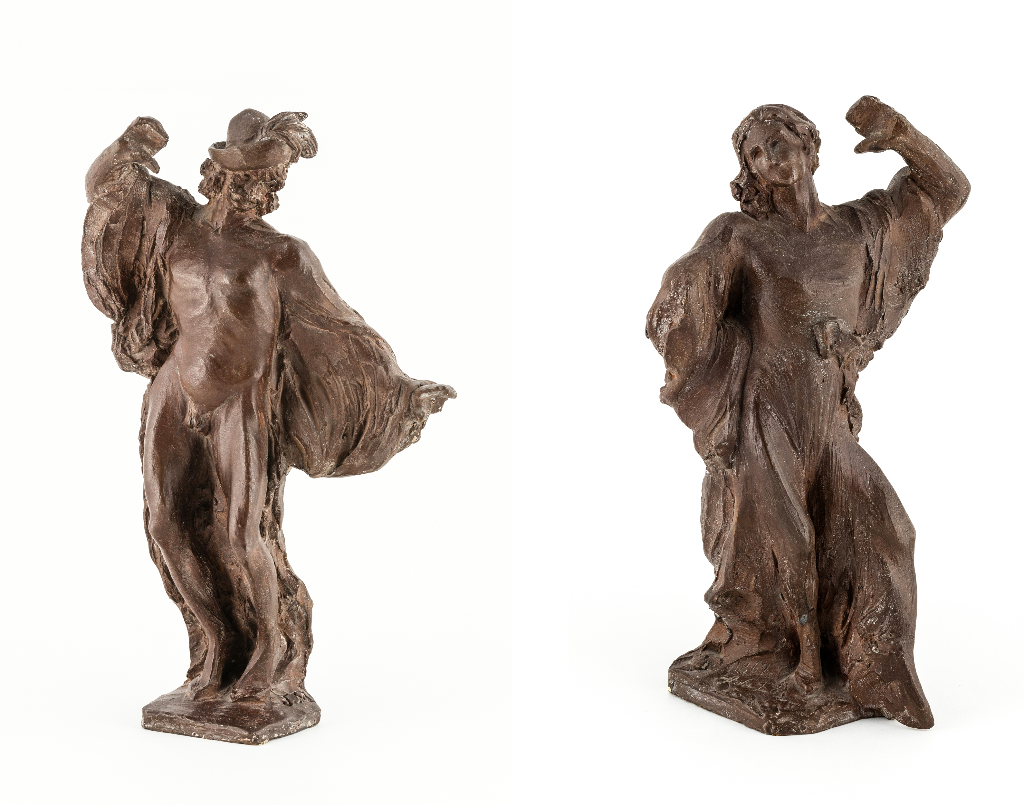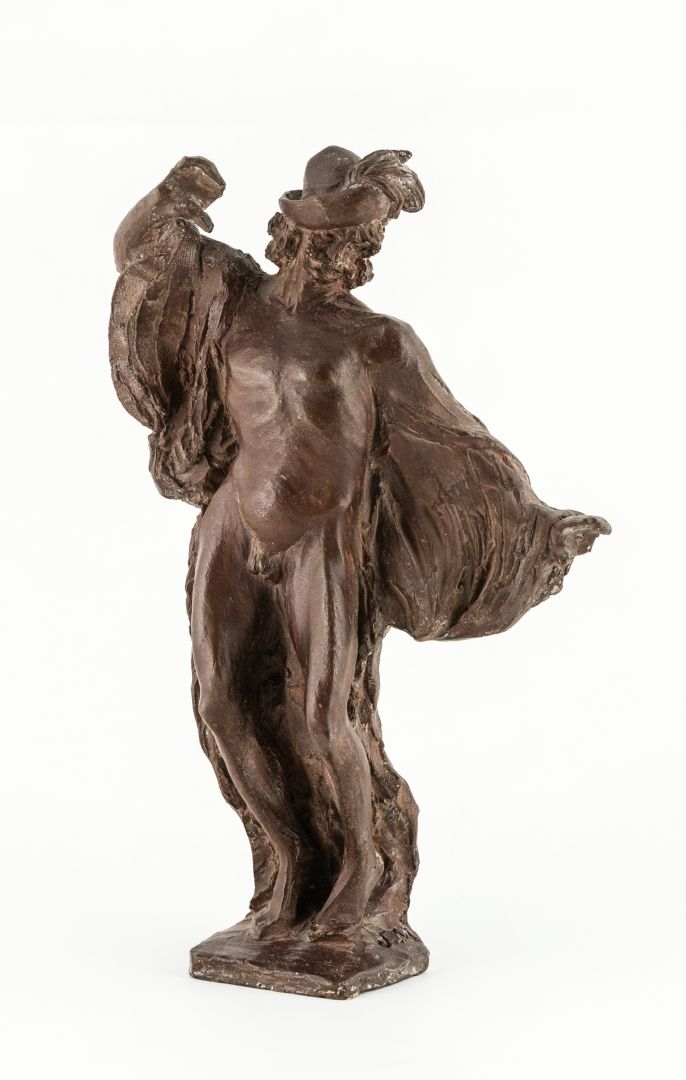Hall 2
Dancing Peasant IX.
IZSÓ, MIKLÓS (1831–1875)
Dancing Peasant IX., 1867
bronze casting of the original terracotta sculpture held in the Hungarian National Gallery, height: 27 cm; marking on the right of the base: IM
Fine Arts Collection, Inv. No.: 93.86.
Known for elevating Hungarian national sculpture to European status, Izsó Miklós was born in Disznóshorváti (present-day Izsófalva), Borsod County. He was a student of the Sárospatak Reformed College when he joined the infantry ranks of the Hungarian War of Independence (1848–49). Afterwards, he came under the patronage of sculptor István Ferenczy in Rimaszombat (Rimavská Sobota) and soon after he became an apprentice in Vienna’s finest sculpture studio. In 1861, anguished by homesickness, he created his most well-known sculpture in Munich titled the Sorrowful Shepherd, which is an allegory of the failed revolution and war of independence.
The life of Miklós Izsó is similar to that of his French contemporary, J. B. Carpeaux. This holds especially true if we compare the terracotta figures created by the two artists during the same period, albeit independent of each other. The oeuvre of Francois Rude likely had a lasting impact on both of them.
These brilliantly modelled dancers of Izsó were made for his own amusement. He often revisited this theme throughout his life. Fifteen such sculptures from his legacy became public property. According to György Sebestyén, these statues are dancing to Hungarian verbunkos music, with each responding to the other’s steps. The artist himself was also a fine dancer, which explains the inventive force that is emanating from these otherwise small, sketch-like works of art.
Art historian Lajos Fülep explained the artistic value represented by this series of sculptures during his inaugural speech at the Hungarian Academy of Sciences, emphasizing how much of a feat was for Izsó to imbue each figure with both the sculptural experience of spatiality and the counterpoint principle of Hellenic art. Such efforts are significant, however, it is even more important that Izsó was capable to express several unique national characteristics through the universal language of sculpture, such as the improvisational transubstantiation, the chain-rattling spirit of inner independence and the pride to hold onto one’s individuality despite adversity.
The Herman Ottó Museum created bronze casts of two terracotta sculptures from this series in 1993, with permission from the Hungarian National Gallery. The moulds were made by sculptor Sándor Györfi, who claimed that, based on the sculpting, Izsó originally also intended these to be cast from bronze. Therefore we believe that these late casts are in line with the original intentions of the artist.
Gertrud Goda
(In: A Herman Ottó Múzeum Képtára. Edited by: Andrea Pirint. Miskolc, 2004. 43. Cat. No.: 34–35.)

